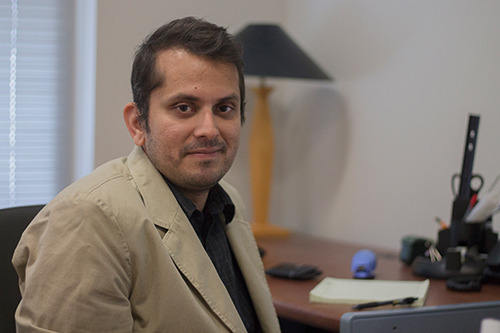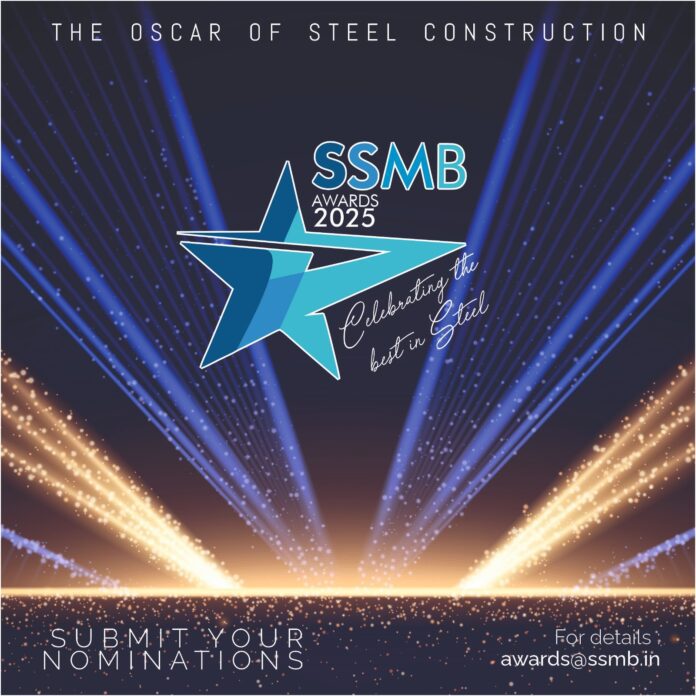Intro: Amit Kanvinde is a Professor in the Department of Civil & Environmental Engineering at the University of California. He specialises in steel structures, earthquake engineering, and advanced structural design. His research focuses on improving the resilience, safety, and efficiency of modern steel construction. He actively collaborates with academia and industry to translate research into practical engineering solutions.
We are planning a technical paper for our magazine. Could you share any insights or developments related to steel construction that could benefit our readers?
In India, steel has traditionally been less popular than concrete for construction. However, this trend is changing for several reasons. Steel structures offer much faster construction timelines, and they are more environmentally friendly—not only in terms of overall carbon footprint but also in reducing local pollution during construction.
Our technical research indicates that, with proper design and execution, steel structures can be built efficiently and cost-effectively in India. The combination of speed, sustainability, and adaptability is making steel an increasingly attractive option for developers and engineers. As awareness grows, more projects are beginning to explore steel as a viable, modern alternative to conventional concrete construction.
Could you give a quick overview of the session and its objectives?
The session focuses on Performance-Based Engineering, a concept widely used in the US and other countries. Instead of relying solely on standard design codes, engineers use advanced simulation techniques—similar to methods used in automotive and aircraft design—to optimise building performance.
These sophisticated simulations require specialized skills, and the program aims to equip professionals from Mumbai and surrounding regions with the necessary expertise. By building these capabilities, participants will be able to apply advanced simulation methods in the design of their own steel and structural frameworks, ensuring safer, more efficient, and performance-driven buildings.
Could you share your academic journey and what led you to focus on steel structures and structural engineering?
My academic journey began at IIT Bombay, where I completed my B.Tech. I then pursued a Master’s and Ph.D. at Stanford University in California, fulfilling a long-held aspiration inspired by my father, who was also a structural engineer.
After completing my studies, I returned to IIT Bombay and joined as faculty. I quickly developed a deep passion for structural engineering, particularly steel structures, and decided to focus my research in this area. Over time, I have been able to combine teaching and research, exploring advanced aspects of steel building design, seismic performance, and performance-based engineering.
What are the key research questions that have guided your work in steel structures over the years?
My research primarily focuses on structural connections in steel buildings. A recent area of interest is base connections—how columns are attached to concrete foundations. The central question is how to make these connections more cost-effective, resilient, safe, and high-performing.
This work has reinforced the importance of developing research that is directly applicable in practice. By focusing on solutions that can be readily implemented in real-world construction, I aim to ensure that innovations are not only technically sound but also easily adoptable by the industry.
How has your experience at the University of California influenced your research perspective on steel design and engineering?
Over the past 20 years, my time at the University of California has profoundly shaped my approach to steel design and engineering. Advising Ph.D. and Master’s students, conducting research projects, and engaging in collaborative studies has expanded my understanding of advanced steel construction methods and performance-based design.
This experience transformed my perspective, allowing me to integrate cutting-edge methodologies with practical applications in steel structures. It reinforced the importance of research that is both technically rigorous and directly relevant to real-world construction challenges.
Much of your research focuses on steel connections, fracture mechanics, and earthquake engineering. How do you see these fields evolving over the next decade?
Fracture mechanics and steel connections are relatively mature fields, but the application of earthquake engineering—particularly in the context of community and urban resilience—is only beginning to take off. Over the next ten years, I anticipate that earthquake engineering will be increasingly applied in ways that minimise loss of life, maintain critical functionality, and enhance the resilience of entire communities.
This evolution will not only refine building-level safety but also expand the impact of research to societal scales, helping cities and regions better withstand and recover from seismic events.
In seismic-prone regions, what are the most critical considerations for designing steel structures beyond basic code compliance?
Beyond meeting code requirements, the most critical considerations involve designing for resilience and post-earthquake functionality. It’s not enough for a building to remain standing; it should be able to return to full operational use quickly, with minimal repair costs.
Sustainability is another key factor where steel plays an important role. Steel is a recyclable and environmentally friendly material, allowing designers to achieve earthquake safety while also minimising the ecological footprint. Ultimately, the goal is to combine structural safety, rapid recoverability, and sustainability to create buildings that perform well during and after seismic events.
How do you assess the real-world performance of steel connections compared to laboratory predictions?
Laboratory research has provided a strong foundation for understanding steel connection behaviour, and real-world performance largely validates these predictions. For example, after the 1994 Northridge earthquake, several steel connections failed, prompting extensive research and improved design guidelines.
Since then, steel connections designed based on laboratory studies have performed exceptionally well in earthquakes worldwide. These outcomes demonstrate that rigorous lab-based testing and analysis can accurately predict real-world behaviour, giving engineers confidence in the safety and resilience of steel structures.
From a research perspective, how do U.S. and international steel design codes differ in philosophy and application?
Fundamentally, U.S. and international steel design codes are not very different in terms of technical objectives. However, the code-writing process in the U.S. tends to be more collaborative, actively involving stakeholders such as fabricators, contractors, and engineers.
In contrast, the code development process in India follows a different structure, which can lead to outcomes that are less closely aligned with industry practices. While both sets of codes aim to ensure safety and performance, the U.S. approach tends to better integrate practical considerations, resulting in codes that are more directly applicable to real-world construction.
What lessons can Indian engineers learn from global best practices in steel design, fabrication, and quality control?
One of the key lessons is the importance of collaborative decision-making. Effective practices emerge when stakeholders from steel fabrication, steel production, academia, and practicing engineers come together to share insights and expertise.
By engaging all parties in the design, fabrication, and quality control processes, Indian engineers can better align their work with global standards, improve efficiency, and ensure higher-quality outcomes in steel construction projects.
How can structural codes more effectively integrate the latest research to enhance safety and efficiency?
To improve safety and efficiency, structural codes need to better incorporate recent research findings. This requires stronger and more continuous communication between academia and industry, including fabricators, steel producers, and practicing engineers.
By fostering collaborative dialogue, research outcomes can be more readily understood, evaluated, and adopted in real-world construction. Such integration ensures that codes remain current, technically robust, and aligned with practical implementation, ultimately leading to safer and more efficient steel structures.
What is your perspective on the use of high-performance steels, hybrid structures, and modular construction?
I believe these innovations are highly beneficial for the steel industry. High-performance steels make structures stronger, more durable, and often more cost-effective, while also improving weldability. Hybrid structures and modular construction offer additional flexibility and efficiency in design and execution.
Each of these approaches has the potential to enhance the competitiveness of steel as a construction material, making it a more attractive option for a wide range of projects.
How can stronger collaboration between academia and industry accelerate innovation in steel construction?
Academia brings deep technical expertise and advanced knowledge but may not always be aware of the most pressing real-world challenges. Industry, on the other hand, understands these practical problems firsthand.
By working together, industry can clearly define the problems that need solving, and academia can apply its expertise to develop effective, innovative solutions. This collaboration ensures that research is highly relevant, impactful, and directly applicable, driving meaningful advances in steel construction practices.
“Steel’s true strength lies in its ability to deliver speed, sustainability, and resilience—when design and execution come together with precision.”
— Prof. Amit Kanvinde, University of California




